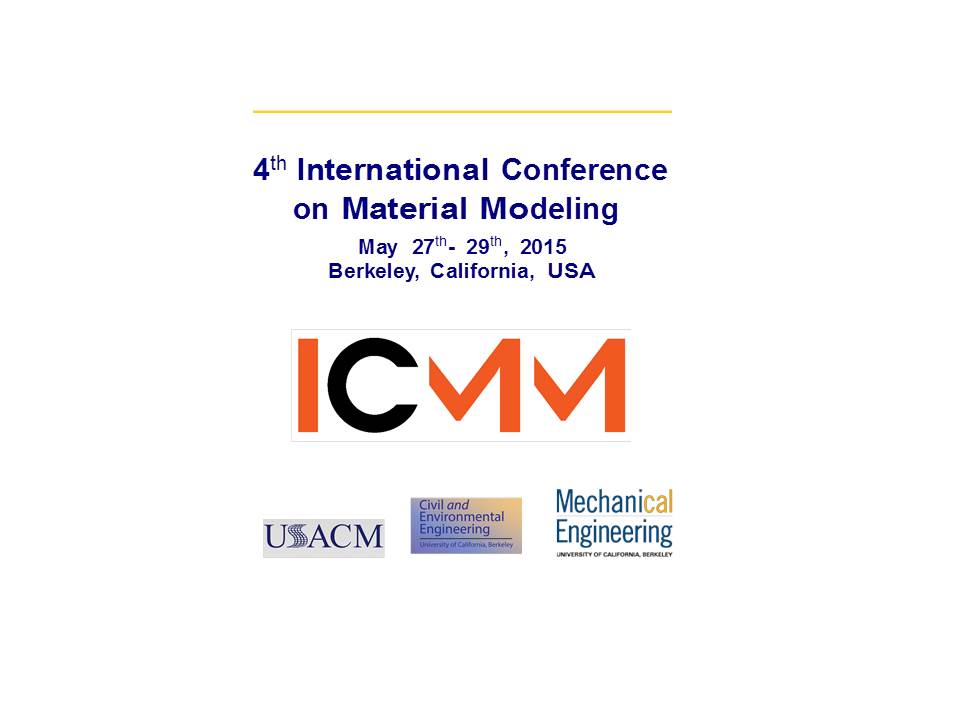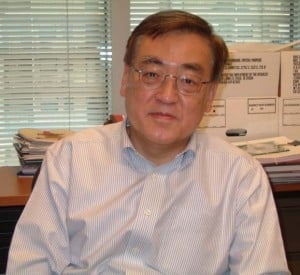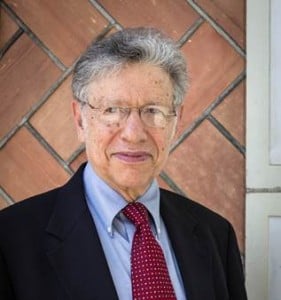Archives: Events
Title:
Thermo/Mechanical Length Scales in Metals from Gradient Plasticity and Molecular Dynamics Studies of Nano-indentation
Abstract:
Strain gradient plasticity (SGP) is used to predict size effects in the deformation behavior of metals at the micron and submicron scale and it is appropriate for problems involving small dimensions. Size dependency of the mechanical properties is a consequence of increase in strain gradients inherent in small localized zones which lead to geometrically necessarily dislocations that cause additional strengthening. The current SGP theories do not give sound interpretations of the size effects if a definite and fixed length scale parameter is used and variable length scale which changes with the deformation of the microstructure that depends on dislocation evolution, temperature, and rate effects in addition to the grain size is required to address the real behavior of the materials. Moreover, the observed indentation size effect cannot be well explained by the SGP theories.
The correlation of the data obtained from MD and SGP simulations of nano-indentation is used to guide the process of identification of characteristic thermo/mechanical length scales in metals. The research studies aim at developing fundamental understanding of critical issues such as: i) the role of characteristic length scales, temperature, and microstructural features (grain size, grain boundaries, texture, etc.) on the yield and flow stresses of nanomaterials, ii) the enabling knowledge of grain boundary engineering aimed at achieving microstructures with desired properties, and iii) advancing the multiscale and physical-based theoretical and computational models to capture the observed mechanical response and scale-dependent characteristics.
About the Speaker:
George Z. Voyiadjis is the Boyd Professor at the Louisiana State University, in the Department of Civil and Environmental Engineering. Voyiadjis is a Foreign Member of the Polish Academy of Sciences. He is the recipient of the 2008 Nathan M. Newmark Medal of the American Society of Civil Engineers and the 2012 Khan International Medal for outstanding life-long Contribution to the field of Plasticity.
Voyiadjis’ primary research interest is in plasticity and damage mechanics of metals, metal matrix composites, polymers and ceramics with emphasis on the theoretical modeling, numerical simulation of material behavior, and experimental correlation. Research activities of particular interest encompass macro-mechanical and micro-mechanical constitutive modeling, experimental procedures for quantification of crack densities, inelastic behavior, thermal effects, interfaces, damage, failure, fracture, impact, and numerical modeling.
He has two patents, over 260 referred journal articles and 17 books (10 as editor) to his credit. He gave over 350 presentations as plenary, keynote and invited speaker as well as other talks. Over fifty graduate students (30 Ph. D.) completed their degrees under his direction. He has also supervised numerous postdoctoral associates. Voyiadjis has been extremely successful in securing more than $15.0 million in research funds as a principal investigator from the National Science Foundation, the Department of Defense, the Air Force Office of Scientific Research, the Department of Transportation, and major companies such as IBM and Martin Marietta.
Faculty Host:Prof. Somnath Ghosh, 203 Latrobe, 410-516-7833, [email protected]
For more information, please contact Khairul Bariah Abd Majid PhD, 410-516-5033, [email protected]
Title:
Integrated Computational Materials Engineering (ICME) for Lightweight Materials
Abstract:
Pacific Northwest National Laboratory (PNNL) is the only Department of Energy (DOE) national laboratory recognized by industry with signature capabilities in Integrated Computational Materials Engineering (ICME), and our research objective is to develop microstructure-based predictive modeling tools in understanding the influences of meso-scale defects and heterogeneities as well as their evolution kinetics on the overall mechanical properties, including ductility and failure, of engineering materials. We are the key bridge between the lower length scale material science and discovery to the larger length scale materials engineering and application. We are currently developing ICME-based predictive capabilities in lightweight metallic materials, including nuclear fuel and structural materials, multiphase advanced high strength steels, Mg castings, aluminum sheets, as well as amorphous glass systems for transparent armor applications. In addition to bulk material property predictions, Dr. Sun’s team has developed an integrated suite of modeling tools considering various manufacturing processes such as cutting (shearing), stretching, forming, welding and joining, in final property predictions. In this presentation, Dr. Sun will present PNNL’s ICME modeling framework and its applications in various lightweight materials including 3rd generation advanced high strength steels, aluminum sheets and Mg casting.
About the Speaker:
Dr. Sun is a Laboratory Fellow and the Technical Group Leader of the Applied Computational Mathematics and Engineering Group at the Pacific Northwest National Laboratory (PNNL). She holds a Ph.D. and two master degrees from the University of Michigan, and has a broad range of experience in the areas of applied mechanics and computational materials. Her expertise lies in applying the mechanics and materials basic principles in solving practical engineering problems associated with advanced materials.
Faculty Host:Prof. Somnath Ghosh, 203 Latrobe, 410-516-7833, [email protected]
For more information, please contact Khairul Bariah Abd Majid PhD, 410-516-5033, [email protected]
Title:
MECHANICS OF MULTIFUNCTIONAL MATERIALS & MICROSYSTEMS
Abstract:
The area of multifunctional structures has become prominent in the last few years with a number of definitions and concepts being put forth. The most popular definition is a structure that has the ability to perform multiple tasks through judicious combinations of structural integrity with specific functional properties dictated by the system requirements. Some researchers take a rather pragmatic view of multifunctional design by starting with a conventional composite and incorporating the additional layers with specific functionality. Others try to emulate biological systems, in which jointed frameworks and complex materials impart active functionality at multiple length scales. It is hoped that individual material elements are concurrently participating in distinct, beneficial physical processes thereby delivering truly dramatic improvements in system-level efficiency instead of incremental improvements. Among various visionary contexts for developing a new generation of multifunctional structures, the most revolutionary one appears to be “autonomic” systems that can sense, diagnose and respond to external stimuli with minimal intervention. One prominent example has been “self-healing” polymers and composites that mimic the autonomic repair process of biological systems in response to damage. Ever since this novel concept was demonstrated barely thirteen years ago, the worldwide support has allowed focusing extensive research efforts to the subject of autonomic structures in ever-expanding scope. These efforts have established the concepts of “micro-vascular composites for self-cooling,” “neurological system inspired network for self-sensing and actuation,” “self-sustaining structures with integrated power sources,” etc. Such structures would be able to attain each of specific functionalities, adapt to new situations, and perhaps reconfigure them to respond to a perceived threat or change of environment. Each of the cited examples points the values of a truly autonomic system capable of multiple functions to survive its operating condition and environment for longer periods of time than the traditional structures can endure.
About the Speaker:
Dr. Lee is a Program Manager for Mechanics of Multifunctional Materials & Microsystems at the US AFOSR in Arlington, Va. His primary responsibilities include the establishment of science base for integration of emerging materials and micro-devices into future aerospace systems requiring multi-functionality. Dr. Lee joined AFOSR in 2001, following12 years on the faculty of Dept. of Engineering Science & Mechanics at the Pennsylvania State University. He has presided over a number of multi-disciplinary research initiatives, covering a broad range of topics such as “self-healing materials,” “neurological system-inspired sensory network,” “self-sustaining structures with integrated power sources,” “load-bearing antenna systems,” and “biomolecular autonomic materials.” At Penn State, he taught the engineering mechanics courses and performed the sponsored research in the areas of: nanocomposites, penetration failure mechanics, fatigue behavior, and manufacturing science of composites. Prior to his academic career, he had 10 years’ industrial research experience and 3 years’ government research experience.
Faculty Host:Prof. Somnath Ghosh, 203 Latrobe, 410-516-7833, [email protected]
For more information, please contact Khairul Bariah Abd Majid PhD, 410-516-5033, [email protected]
Title
Dental Enamel- a Multi-Scale Modelling Challenge
Abstract
The tooth is a unique functionally graded composite structure at several levels providing a hard and apparently self-healing enamel external shell bonded to a dynamic and resilient dentin core both supported by a vascular and neural network in the tooth pulp. Tooth enamel is nature’s cell derived method for production of a high elastic modulus (~ 90 GPa), hard, wear, and fatigue resistant structure. This presentation will review the micro and meso structure of human teeth as well as studies on their Hertzian contact and Vickers indentation response. The fracture toughness measurements of enamel and dentin by several groups and the need to further explore mechanical response with enamel location and orientation are discussed. Emphasis well be on the role of decussation on enamel properties and likely mechanisms for enamel self-repair of microcracks when teeth are fatigued
About the Speaker
Van P. Thompson, DDS, PhD, is currently, Professor of Biomaterials, Biomimetics and Biophotonics at King’s College London Dental Institute and was previously Chair, Biomaterials and Biomimetics, NYU College of Dentistry. Known for his work on adhesion and bonded bridges at the University of Maryland he has published many articles and made numerous presentations on dental biomaterials in the U.S. and internationally. His current research areas include dentin caries activity, all-ceramic crown fatigue and fracture, modifications of dentin for bonding, engineering tissue response via scaffold architecture and practice based research (PEARL Network).
Faculty Host: Prof. Somnath Ghosh, 203 Latrobe, 410-516-7833, [email protected]
Khairul Bariah Abd Majid: 410-516-5033 or [email protected]
Title:
End-to-end earthquake simulation: From the source to propagation path, site effects, and seismic response of building clusters
Abstract:
This talk will deal with the response of a simple class of building clusters during earthquakes, their effect on the ground motion, and how individual buildings within the cluster interact with the soil and with each other. In order to study this problem it is convenient to first simulate the free-field earthquake ground motion and then incorporate this ground motion as input to the domain that includes the building structures. To this effect, I will describe Hercules, a parallel finite element code developed by the Quake Group at CMU for modeling the kinematic source, wave propagation path and local site effects, and the Domain Reduction Method (DRM), our methodology for incorporating the incoming seismic motion into the analysis of the earthquake response of civil infrastructure in a localized region. As an application, I will then show results of a simulation of the ground motion during the 1994 Northridge earthquake and focus on the coupled response of a set of idealized building models located within the San Fernando Valley in southern California.
About the Speaker:
Prof. Jacobo Bielak received his Civil Engineer’s degree from the National University of Mexico (UNAM), MS from Rice University, and PhD from Caltech. He joined Carnegie Mellon University in 1978, where he is now the Paul Christiano University Professor. His research is in the areas of earthquake engineering and engineering seismology, and, more recently, also structural health monitoring. He was a member of the original Applied Technology Council (ATC) committee that drafted the first tentative seismic provisions for soil-structure interaction in the US based mainly on his work. These provisions are now, in modified form, part of the NEHRP seismic provisions. Recognition for his work includes the Gordon Bell Prize for Special Accomplishment Based on Innovation. He is a Distinguished Member of ASCE and a member of the National Academy of Engineering.
Faculty Host:Prof. Somnath Ghosh, 203 Latrobe, 410-516-7833, [email protected]
For more information, please contact Jae Hong, 410-516-5033, [email protected]
Title:
PDE Dynamics of Dislocations
Abstract:
The talk will describe a PDE framework to deal with the dynamics of dislocations leading to plasticity in solids. Dislocations are defects of deformation compatibility/integrability in elastic response. The presented framework will be shown to be capable of representing discrete defect dynamics as well as present a natural setting for asking questions related to macroscopic plasticity arising from the underlying dislocation dynamics.
About the Speaker:
Amit Acharya is a Professor in the Mechanics, Materials, and Computing group in the Department of Civil & Environmental Engineering at Carnegie Mellon University (CMU). He received a PhD degree in Theoretical & Applied Mechanics from the University of Illinois at Urbana-Champaign (UIUC) in 1994. Subsequently, he did post-doctoral work for a year at the University of Pennsylvania and then worked for HKS, Inc. in Providence, RI (now Simulia, Dassualt Systemes) from 1995-1998, spending most of his time as a senior research engineer in the ABAQUS Std Development group. There, he was the lead developer of the *Hysteresis nonlinear viscoelastic material model and the S4, fully-integrated finite strain shell element, that are still in use in the ABAQUS general-purpose FE code. From 1998-2000, he was a Research scientist at the DOE-ASCI funded Center for Simulation of Advanced Rockets at UIUC, before joining CMU in 2000.
His broad research interests are in Continuum Mechanics, Mathematical Materials Science, and Applied Mathematics with special emphasis on theoretical and computational continuum dislocation mechanics and plasticity and its coupling to solid-solid phase transformations, liquid crystal mechanics, damage, coarse-graining of nonlinear time-dependent systems, nonlinear shell theory and fluid-structure interaction including mass transfer.
Faculty Host:Prof. Somnath Ghosh, 203 Latrobe, 410-516-7833, [email protected]
For more information, please contact Jae Hong, 410-516-5033, [email protected]











